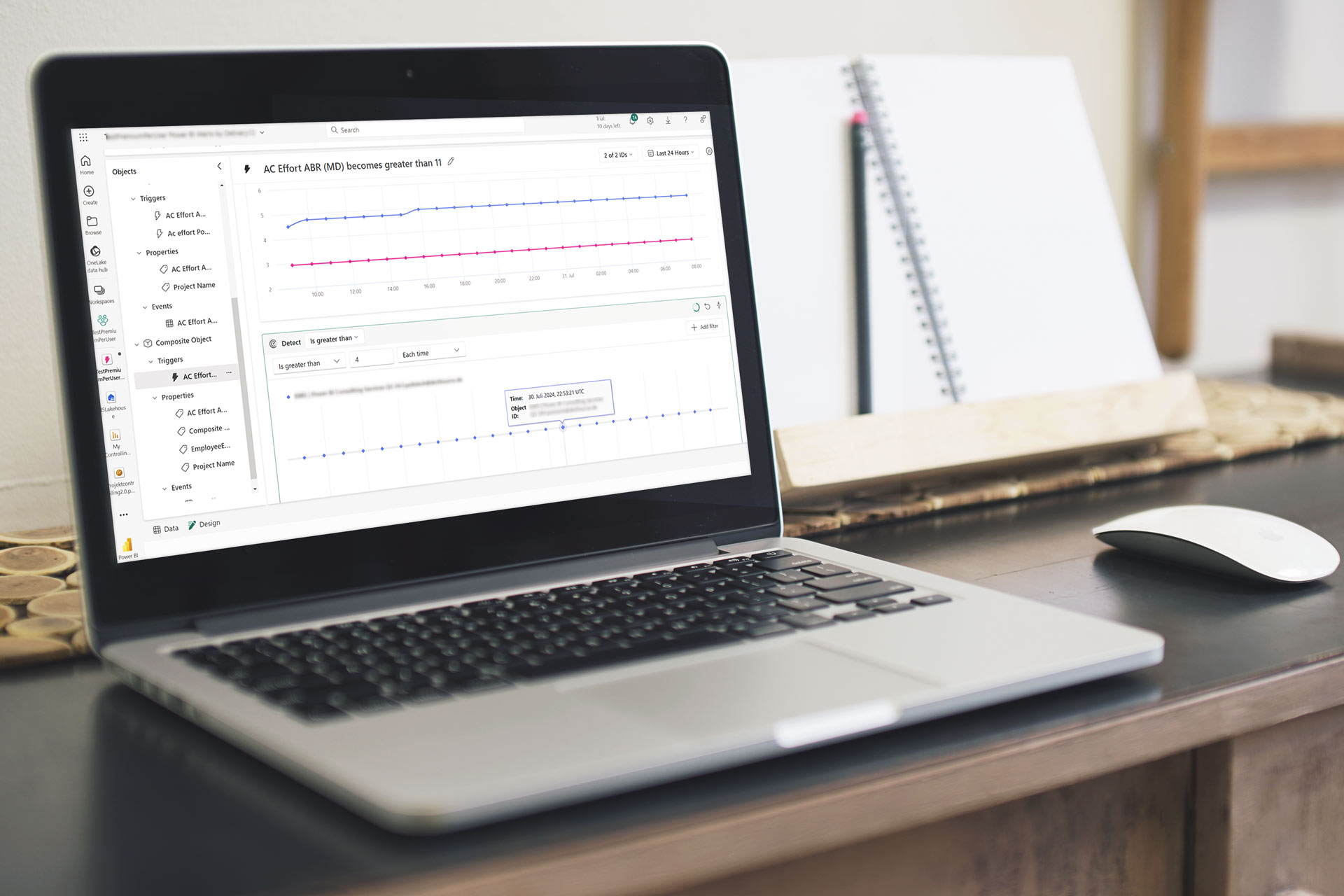
What Is Microsoft Fabric?
Microsoft Fabric is a software-as-a-service (SaaS) platform for data and analytics that supports your company in efficiently managing, analysing and gaining insights from data. As an end-to-end solution, Microsoft Fabric covers everything from data extraction, processing and analytics to visualisation. This allows you to optimise processes, promote data-driven decision-making and foster innovation throughout your company.
The main features of Microsoft Fabric include reliable data management, powerful analytics tools and an intuitive user interface. In addition, Microsoft Fabric offers a high degree of flexibility and scalability, which means that it can easily be tailored to your individual needs.
What Are the Benefits of Microsoft Fabric?
The unified environment for data management and analytics enables both business users and data professionals to work efficiently with data.
Thanks to the seamless integration with other Microsoft products, you can streamline your processes.
By integrating Microsoft Azure AI Services, you can gain valuable insights from data and boost your productivity with the help of Microsoft Copilot.
On the SaaS platform, you can find all the tools you need to process and leverage data, including components from well-known platforms such as Microsoft Power BI and Azure.
The cloud-based data hub called OneLake allows you to store and manage all your data in a centralised location.
How Does Microsoft Fabric Work?
Microsoft Fabric brings together various Microsoft Azure functionalities on one platform. All data is accessible in a centralised location, namely OneLake. It forms the basis for the services provided by Microsoft Fabric: Here, data can be stored, shared and reused by adjacent components.
A direct connection to data from third-party systems is also possible. Within OneLake, data can be organised into domains and workspaces. Using the wide range of tools and OneLake as a basis, Microsoft Fabric combines data extraction, storage, processing, visualisation and sharing.
Microsoft Fabric – Components
- Microsoft Azure Data Factory: Integrate your data by building and orchestrating extract, load, transform (ELT) pipelines.
- Microsoft Azure Synapse Analytics: Manage your data in a lakehouse, combining the simplicity of a data lake with the more complex business logic inherent in a data warehouse.
- Microsoft Power BI: Use this tool to set up company-wide reporting. Features such as AI analytics and Microsoft Copilot support you in processing and visualising your data.
- Real-Time Intelligence: Work with streaming- and event-based data to share real-time insights throughout your company.
- OneLake: Get access to a centralised location for storing and managing all your data and components involved in the infrastructure.
- Data Activator: Monitor your data from Power BI reports and event streams in a no-code environment and create an automated notification system.

Use Cases for Microsoft Fabric – Benefit from Our Hands-on Expertise
Data Mesh
With Microsoft Fabric, you can establish a unified data mesh, allowing you to structure your data based on different business units. By organising your data into domains, you can manage it in line with your specific requirements.
AI for Data Analytics
Through built-in AI tools, Microsoft Fabric assists you in analysing data. Furthermore, data science algorithms can be implemented using Microsoft Azure Data Science and Spark. To get the most added value from analytics activities, the results are made available for further processing – directly on the platform as data products.
Self-Service Data Analytics
The integration of various components and tools enables the democratisation of data for different skill sets. Microsoft Copilot can also provide support in completing a wide range of tasks. Additionally, business users can create their own data products by independently retrieving and analysing data.
Benefit from Our Services Before, During and After the Project
Before the Project
- Introduction, tailored offer and audit of the existing infrastructure
- Requirements elicitation and workshops
During the Project
- Agile project approach using Scrum and Kanban
- Completion of analytics tasks, data processing, calculations and much more
- Set-up of a unified data infrastructure
- Connection of all required data sources
After the Project
- Follow-up, training courses and enablement to ensure the best possible user experience
- Support and maintenance of the infrastructure
Our Data-Driven Business Services
FAQ – Frequently Asked Questions About Microsoft Fabric
Why should you opt for Microsoft Fabric?
Microsoft Fabric provides a unified environment for data management and analytics that ensures a high degree of flexibility and scalability as well as seamless integration with other Microsoft products. It helps leverage data comprehensively and simplifies complex analytics.
Can you integrate Microsoft Fabric into your existing infrastructure?
The platform can be flexibly integrated. It is possible to connect a wide range of data sources, which can facilitate data management. We are happy to assist you in migrating your data and rolling out Microsoft Fabric, offering training courses tailored to your individual needs.
Does Microsoft Fabric replace Microsoft Power BI and Azure?
Existing Microsoft Azure components can be integrated with or migrated to Microsoft Fabric. You can continue to use Power BI solutions as Microsoft Fabric components and enhance them. Moving your data (products) to Microsoft Fabric enables you to retrieve information from a centralised location and add features such as Data Activator.
How can you get started?
Based on your analytics use cases, a Microsoft Fabric prototype can be implemented. An application-specific capacity is selected, which forms the basis for testing and enhancing the functionalities. This allows you to achieve quick wins and expand the platform according to your individual needs.
Who is Microsoft Fabric intended for?
Regardless of the skill set, the platform provides tools for everyone working with data. Business users can leverage easily accessible tools to generate reports and conduct initial analytics activities, data analysts can carry out calculations and complete analytics tasks using Python or SQL and data engineers can extract and transform data.
Other Microsoft Solutions
Want to learn more? I'm looking forward to your questions!
